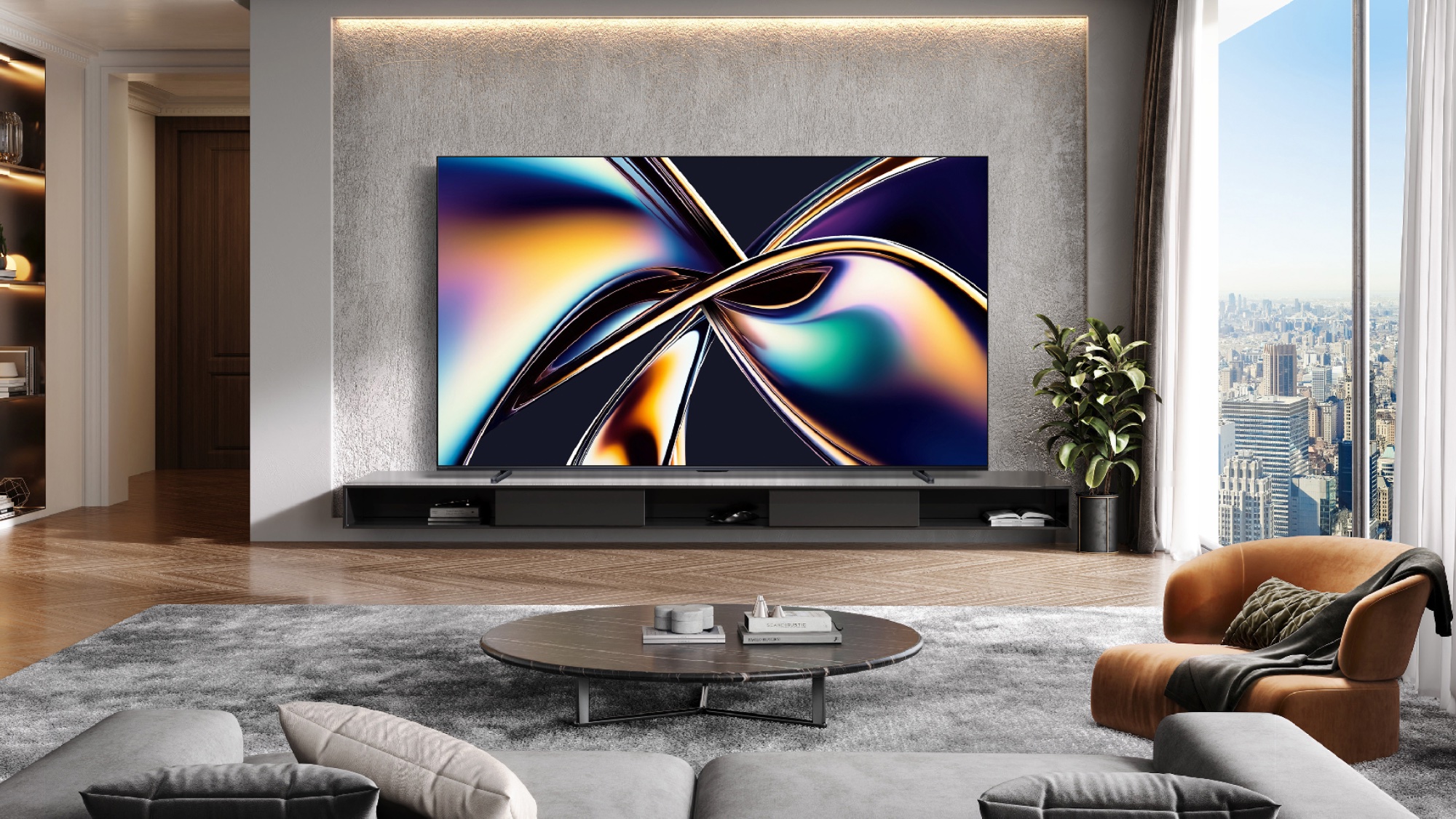Early Verdict
With added brightness and more features than its predecessor, the Hisense U8QG is shaping up to be one of the best Mini-LED TVs of the year. Ultimately, though, Hisense needs to prove that the U8QG's picture processing can stand toe to toe with Mini-LED TVs from Samsung, Sony and TCL.
Pros
- +
Bright and colorful
- +
Superb backlight control
- +
Extensive selection of gaming features
Cons
- -
Picture processing still needs improvement
- -
Only three HDMI 2.1 inputs
Why you can trust Tom's Guide
Hisense, creators of some of the most value-packed TVs on the market, just announced a slate of new models for 2025. And I had a chance to spend some hands-on time with what might be the most hotly anticipated set: the Hisense U8QG Mini-LED TV.
Last year, the U8QG’s predecessor — the Hisense U8N — quickly rose through the ranks on our best TVs list. It earned its success by delivering bright, eye-catching performance and a boatload of features for much less than most of the rival Mini-LED TVs in its class.
Having spent countless hours watching, testing and tweaking the settings of the U8N, I was excited to have a sneak peak at its successor, the U8QG. We still need to take this TV for a formal test drive in the coming weeks, but for now, here are my first impressions.
Hisense U8QG: Sizes, pricing and availability
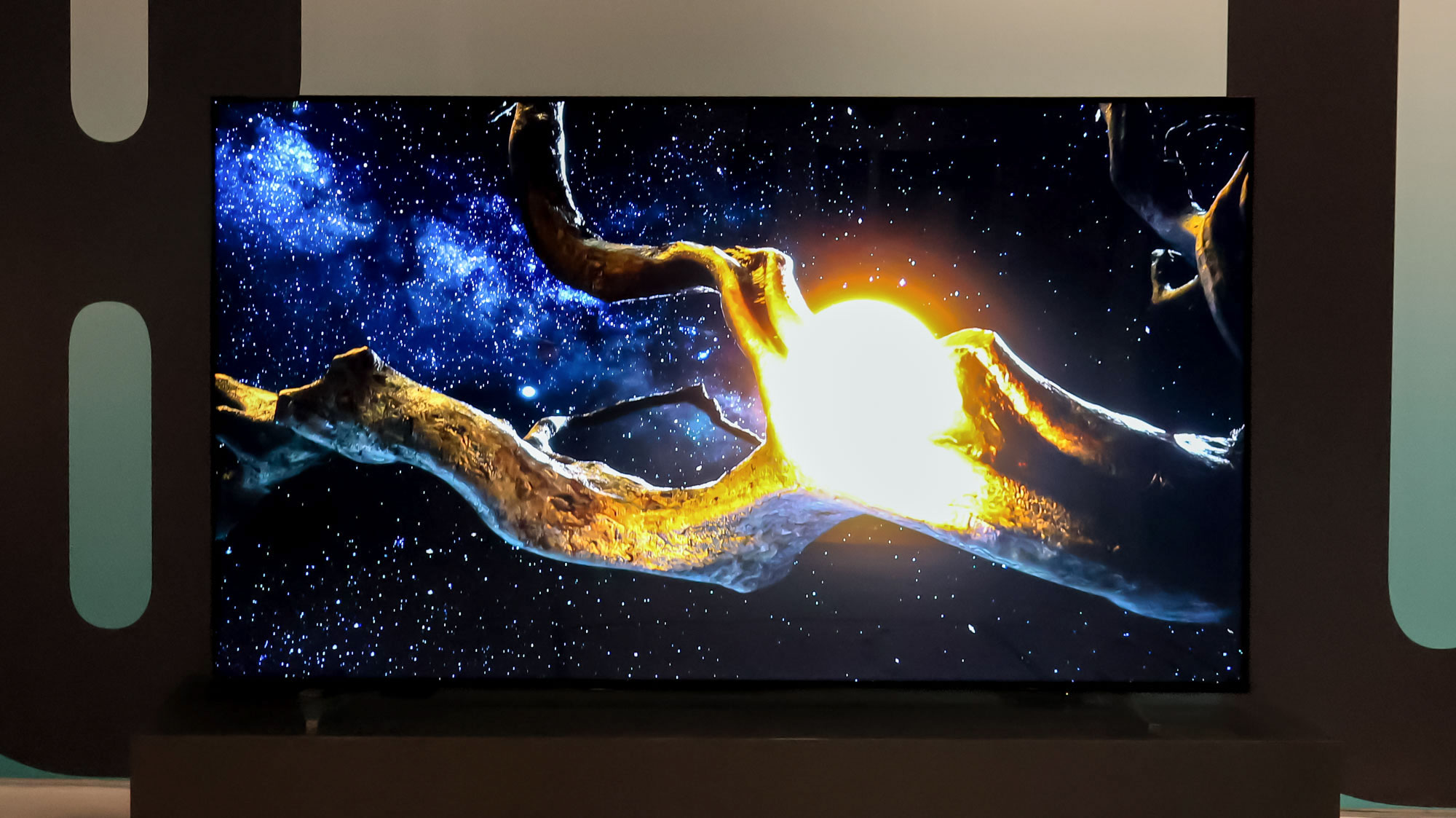
When it launches this Spring, the Hisense U8QG will be available in five sizes ranging from 55 to 100 inches.
At the time of publishing, there hasn't been an official announcement regarding price and release date.
Size | Price |
|---|---|
55" | TBA |
65" | TBA |
75" | TBA |
85" | TBA |
100" | TBA |
In addition, we don’t have much in the way of hardware information, so it’s unclear whether all of the sizes in the series use the same panel type.
Last year, the 55-. 65- and 85-inch models in the U8 series featured a VA-style panel while the 75-inch set leveraged an ADS panel. A difference in panel type could spell variations in performance, particularly as it relates to contrast and off-axis viewing.
As a quick refresher, VA-style panels typically allow for deeper black levels and better overall contrast, but they do so at the expense of wider viewing angles. IPS- or ADS-style panels, on the other hand, usually produce shallower black levels during most content, but they also tend to hold up better when viewing them from the side.
In speaking with a representative from Hisense, I was also able to confirm that the 55-inch version of the U8QG will likely arrive with a lower peak brightness ceiling due to the nature of its display hardware. This isn’t a surprise, as the 55-inch U8N’s peak brightness is advertised at 1,500 nits — much lower than the 3,000+ figure we reported on larger sizes.
Broadly speaking, though, it remains to be seen how different sizes in the U8QG series will vary in performance.
Hisense U8QG: Specs
Sizes | 55", 65", 75", 85", 100" |
Resolution | 3840 x 2160 |
HDR | Dolby Vision / HDR10+ / HDR10 / HLG |
Refresh Rate | 165Hz |
Audio | 82W, 4.1.2 multi-channel |
Inputs | 3x HDMI 2.1 |
Smart TV | Google TV |
The U8QG offers a native refresh rate of 165Hz — up from the 144Hz refresh rate featured on last year's U8. This might interest folks who intend to use the U8QG in conjunction with a gaming PC.
According to Hisense's listing for the U8QG, all sizes in the series will be limited to just three HDMI inputs. The good news is that all three of them will feature HDMI 2.1 compatibility.
Hisense U8QG: Design
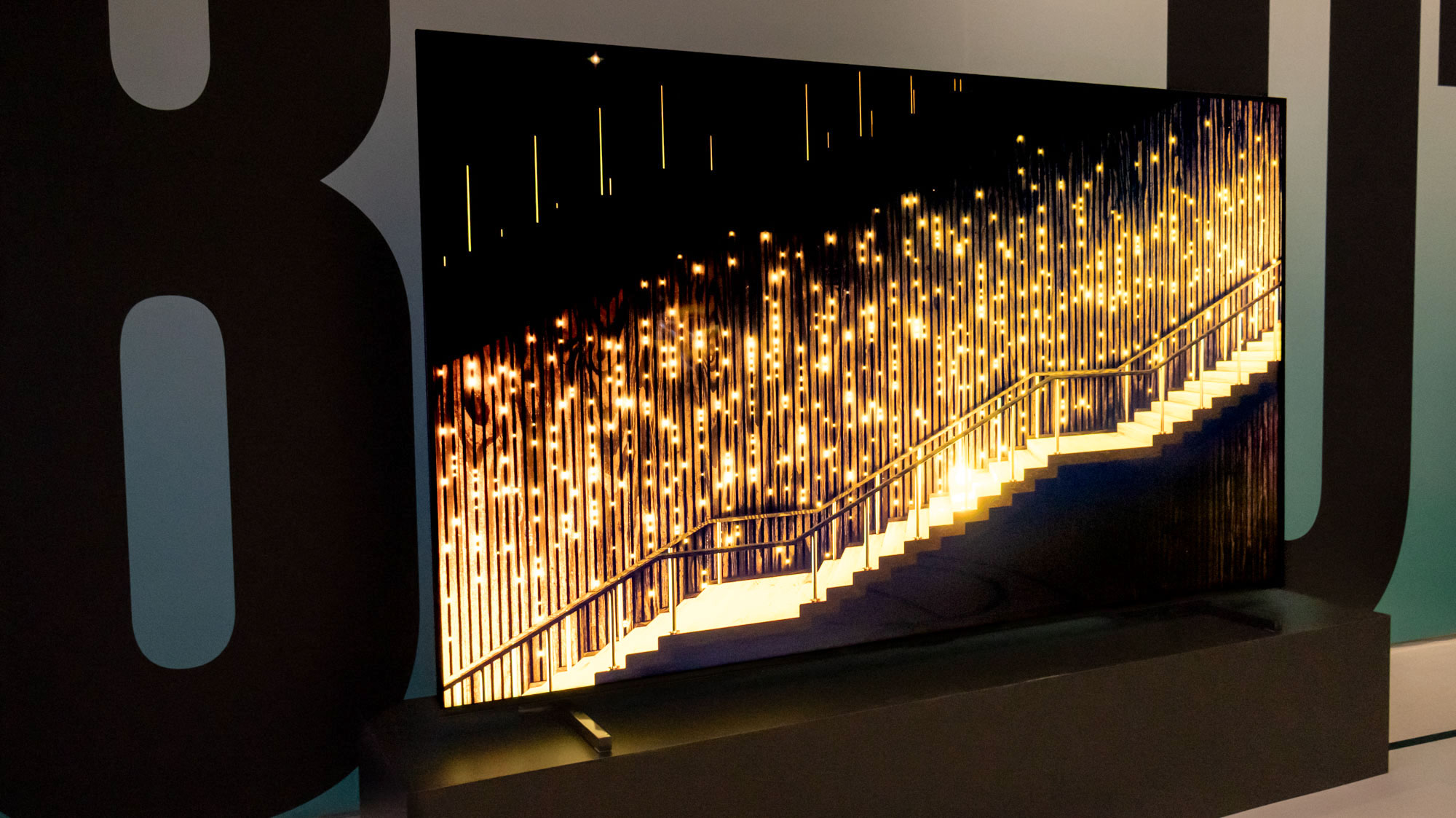
While many mid-range and high-end Mini-LED TVs sport slim, sleek panels, the U8QG leans into a big, bold aesthetic. Its panel is about two inches thick, and if I had to describe it in one term, it would be heavy looking.
If the Samsung QN90F is dressed for a cocktail party; the U8QG is dressed for a space walk.
This should not be confused with cheap looking, though — it’s just a different design approach. If the Samsung QN90F is dressed for a cocktail party; the U8QG is dressed for a space walk.
Online listings reveal that the U8QG’s beefy panel is anchored by a pedestal-style stand, but the unit I assessed at Hisense's event was propped up by a pair of wide-set, square-shaped feet.
It's unclear whether this setup was chosen for the brand's showcase or if some sizes in the series arrive with feet instead of a pedestal stand. In any event, we've reached out to Hisense for clarification.
Hisense U8QG: Performance and features
The U8QG is building on a mostly winning formula in the U8N: a searingly bright picture with carefully orchestrated Mini-LED backlighting.
The U8N also delivered more voluminous color than any other LED TV we tested in 2024, so, yeah — I guess you could say that the U8QG has some big shoes to fill.
For the most part, the U8QG appears poised to do just that. While it’s tough to make any definitive statements about performance metrics in a brand-controlled setting without my testing equipment on hand, the U8QG looks significantly brighter than its predecessor.
More importantly, the U8QG demonstrates superb backlight control, even under punishing conditions. The demo playing on a loop at Hisense’s event showcased visuals that can be demanding for backlit LED TVs.
For instance: A bright, computer-generated black hole, suspended in the darkness of space appeared virtually halo-free from just a few feet away. It was only after I moved to an extremely off-axis position did I begin to notice the gentle, bluish glow of the U8QG’s Mini-LEDs.
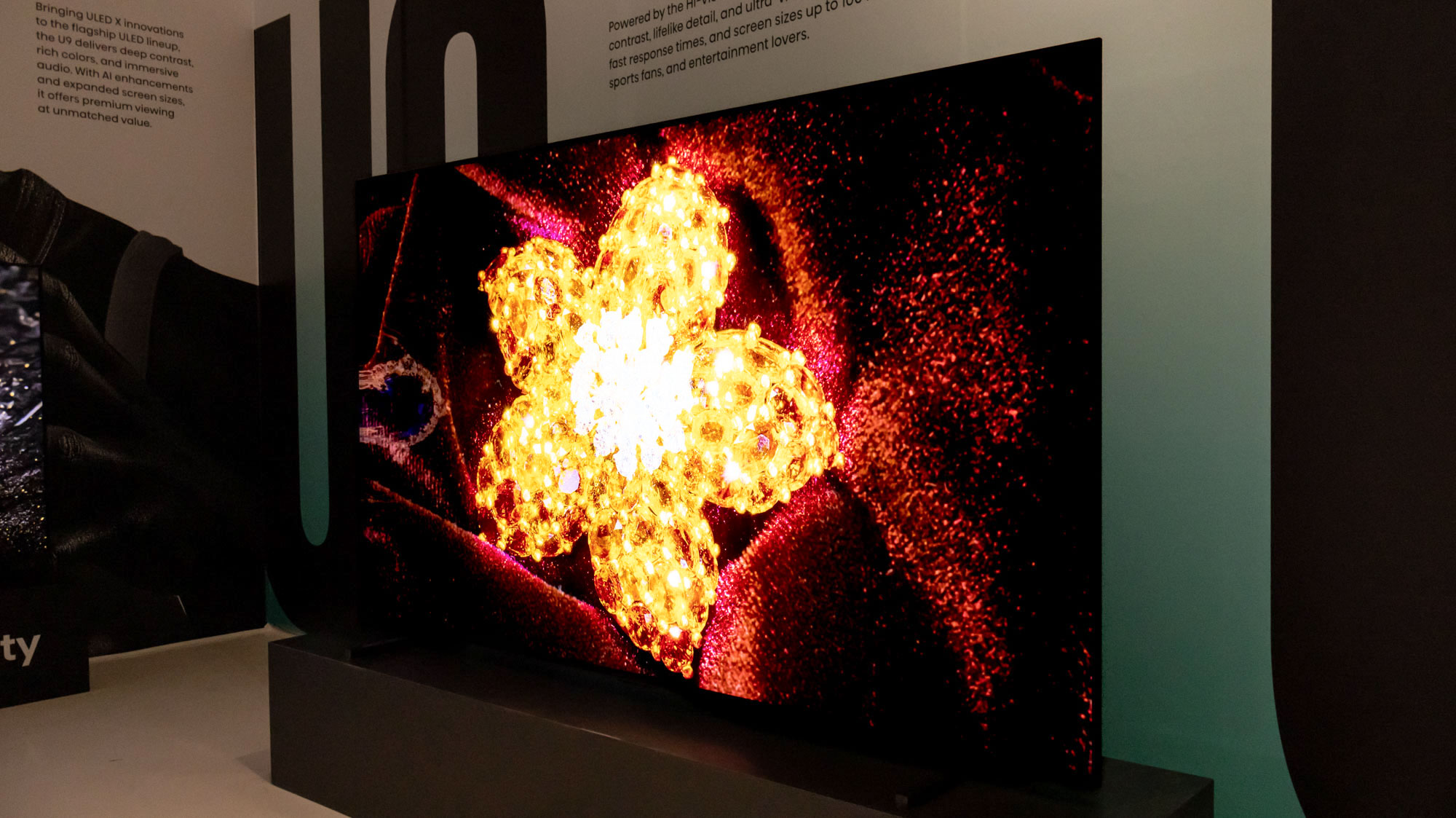
Thanks in part to the TV's high-octane brightness, colors on the U8QG are simply stunning.
Unfortunately, throughout my time with the U8QG, it appeared to suffer from some of the same nagging processing-related issues I've seen on Hisense TVs in recent years.
During a sequence involving close-up footage of a horse shaking droplets of water off its coat, I noticed that the U8QG was struggling to display the smallest details in the horse's hair.
I've seen this happen on Hisense TVs in years past, typically occurring when fine, densely packed textures are in play. Thin, colored stripes on a shirt, for instance, often appear smudged. In addition, the edges of people's bodies sometimes appeared fuzzy on the U8QG, especially during movement.
There's always a chance that these artifacts are embedded within the source material of Hisense's chosen demo reel, but having been disappointed by these issues in the past, I'm worried that they haven't yet been resolved.
Hisense U8QG: Outlook
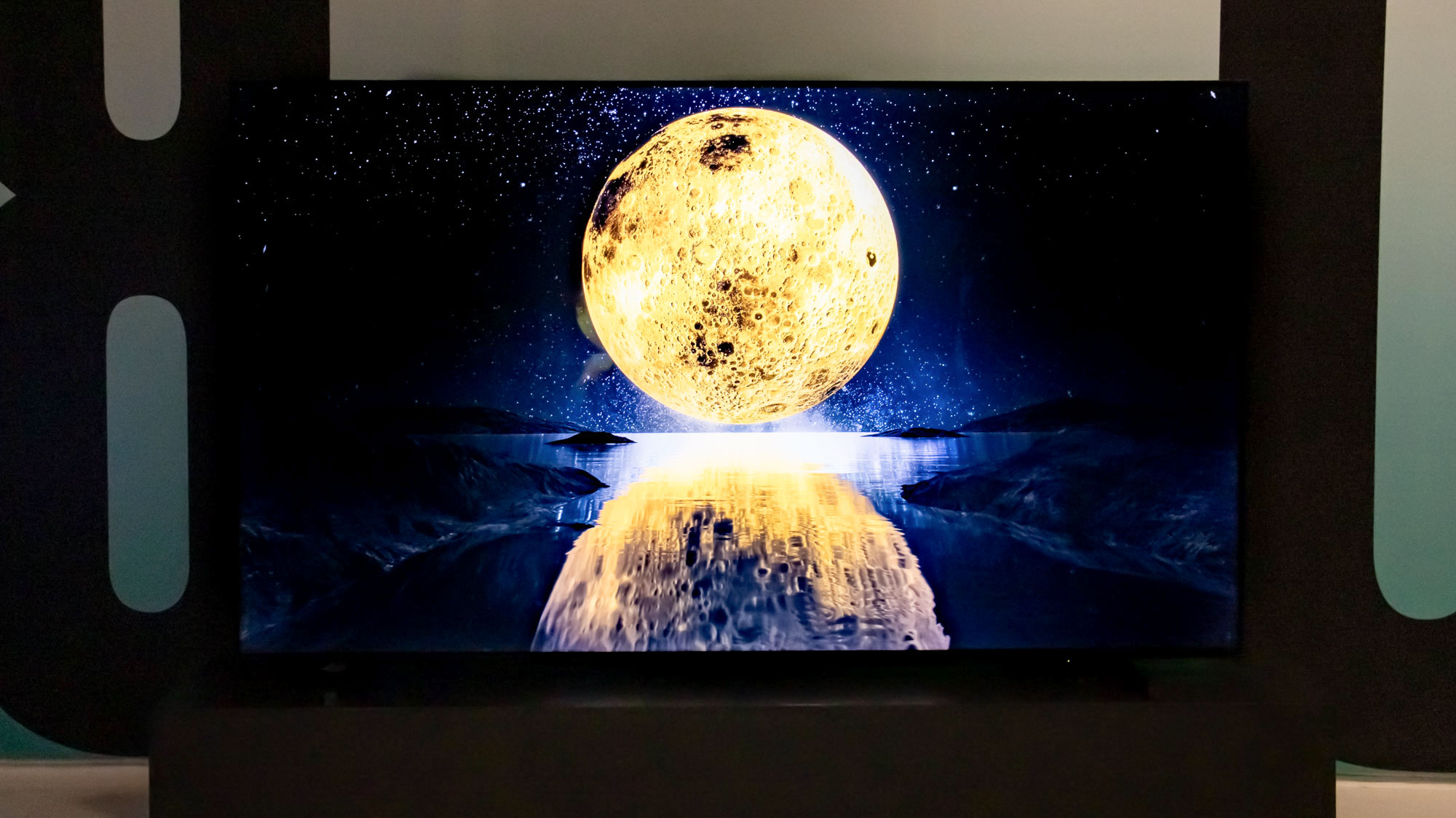
The U8QG appears poised to live up to the legacy of its predecessors, the most recent of which delivered exceptional picture quality at a much friendlier price than the majority of its direct competitors.
Hisense claims that the U8QG is capable of reaching 5,000 nits of brightness in HDR, and while this would be an impressive feat, it's worth emphasizing that brightness isn't the be-all, end-all performance metric.
Having personally encountered picture processing issues on Hisense TVs in recent years, I'd be lying if I said I wasn't concerned about the U8QG's apparent struggles with finer detail.
Nevertheless, if the U8QG follows the same price trajectory as the U8N, it's a frontrunner for the most value-packed LED TV of 2025. Consider us excited to take it for an extended test run.
More From Tom's Guide

Michael Desjardin is a Senior Editor for TVs at Tom's Guide. He's been testing and tinkering with TVs professionally for over a decade, previously for Reviewed and USA Today. Michael graduated from Emerson College where he studied media production and screenwriting. He loves cooking, zoning out to ambient music, and getting way too invested in the Red Sox. He considers himself living proof that TV doesn't necessarily rot your brain.
You must confirm your public display name before commenting
Please logout and then login again, you will then be prompted to enter your display name.
